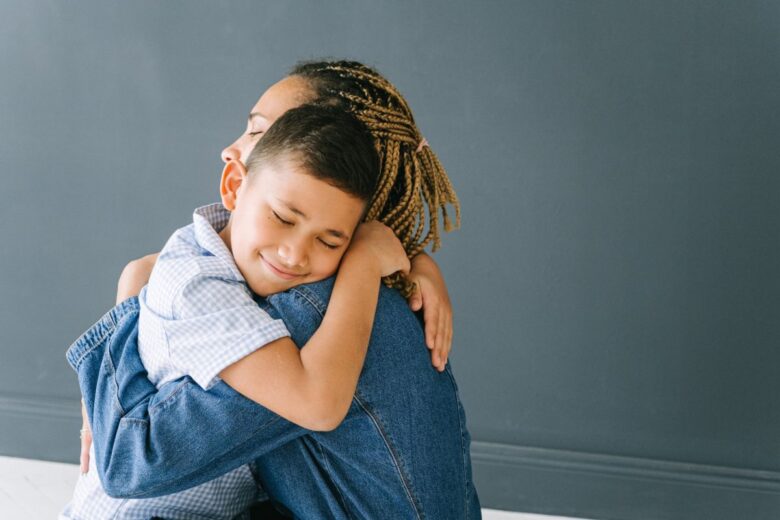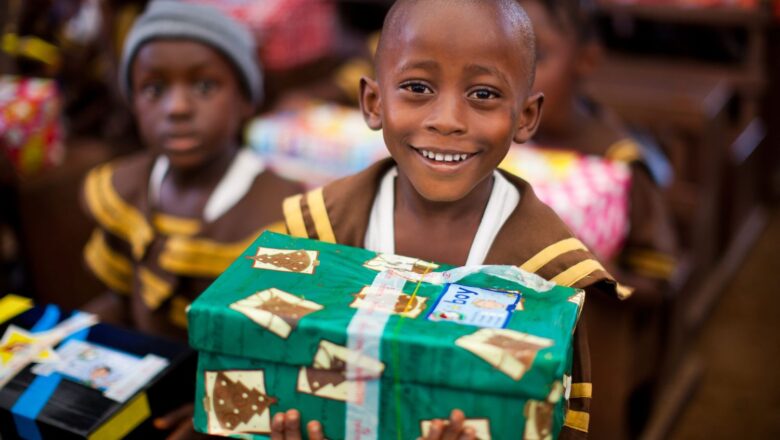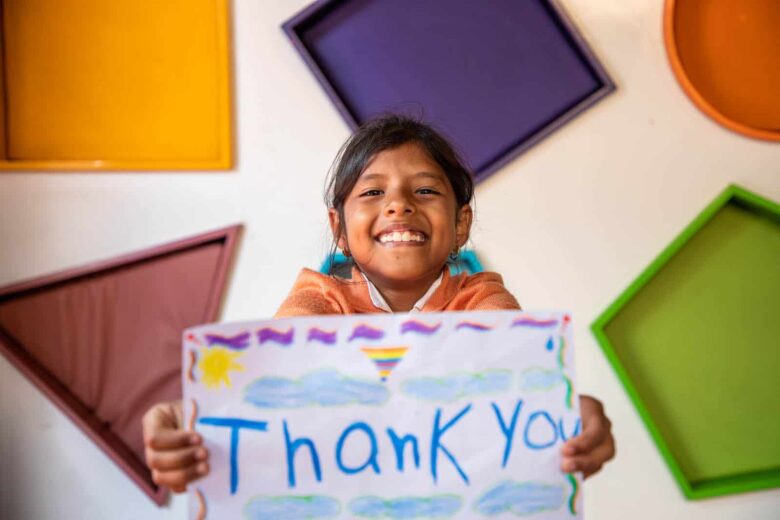As a mother of two, Ashley Campbell knows how hard it can be to raise healthy, well-adjusted kids in today’s fast-paced, digital world. Children are growing up with access to more information than ever before, and thanks to text messaging and next-day delivery, they’re also accustomed to instant gratification.
“As parents, we’re left wondering how all this affects our kids’ social skills and overall well-being,” says Campbell, who is also the founder of Coral & Blue Paper Co. “We want them to thrive in the world they’re inheriting — one that includes phones that seem to do everything except make you feel happier.”
Meanwhile, many kids still struggle to overcome the effects of the COVID-19 pandemic, which has been especially devastating for children. When schools shifted to remote learning, kids were torn away from their friends and classmates during a formative period in their lives, and many continue to experience social isolation, mental health problems, and diminished social skills as a result.
For Campbell, the secret to helping children relearn critical skills, recover their mental health, and re-engage with others is helping them cultivate a quality that many tend to overlook: gratitude.
Contents
Gratitude fosters connection

Source: childrensomaha.org
Studies have shown that gratitude boosts happiness, well-being, and even physical health. Gratitude also improves interpersonal relationships. For instance, researchers Jeffrey J. Froh and Giacomo Bono have found that when students are thankful, they also feel more connected to others.
Numerous practices have proven effective in cultivating this powerful positive emotion. For instance, meditation, breathing exercises, and visualization techniques are common ways to build one’s gratitude muscles. These approaches mobilize the power of our minds to focus on what’s good in our lives, rather than allowing negative thoughts and emotions to rule us.
“Parents can encourage children to keep a gratitude journal in which they list what they are thankful for each day,” Campbell suggests. “Being grateful for what they have instead of focusing on what’s missing will reduce feelings of envy toward other kids who seem like they’re ‘having fun’ all day on social media platforms like Instagram or Snapchat — even if those images aren’t necessarily real.”
According to Campbell, when introducing this activity to children, it’s important to emphasize that the items on the list don’t have to be big. “Sometimes, it’s easiest to feel thankful for the smallest things,” she says. “It’s also not necessary to say something new every day. Repeating the same items can help kids understand how important these things really are.”
Thanking others to feel good yourself
“Another effective way to cultivate gratitude is by writing thank-you notes,” Campbell says, who recently led a workshop at the World Awareness Children’s Museum in Glens Falls, New York. Participating children wrote thank-you notes to friends, family members, teachers, and other important people in their lives. “It was so moving to watch their faces light up while they were writing their letters,” she remembers.
Indeed, as Amit Kumar, an assistant professor at the University of Texas, explains, “Saying thanks can improve somebody’s own happiness, and it can improve the well-being of another person as well — even more than we anticipate, in fact. If both parties are benefitting from this, I think that’s the type of action we should be pursuing more often in our everyday lives.” Kumar conducted a study that found writing thank-you notes consistently improved people’s spirits.
Thank-you notes can be mailed to their recipients or not, but either way, writing the letter itself promotes positive feelings. “If your child has trouble coming up with ideas for who to thank, ask them what they like about a friend or family member and encourage them to express that appreciation in writing,” Campbell advises.
Taking thanks worldwide

Source: pnj.com
Campbell’s mission to spread gratitude through thank-you notes and other practices has even prompted her to start a nonprofit in Burundi — the poorest country in the world. “A friend of mine is a teacher in Burundi,” she explains. “A few years ago, I sent him some stationery from my company for his students.”
Since writing supplies are a luxury in Burundi, this opened up whole new possibilities for the children to communicate. “The kids started writing thank-you notes, composing stories, and making drawings,” Campbell says.
Campbell’s simple gift even had therapeutic effects for the children who had suffered trauma during Burundi’s decades of war. “They can write down what happened to them, which helps them deal with the pain,” Campbell explains. “Sometimes, they read their stories to one another, while other times, they write about their dreams for the future. Many want to become doctors so that they can help others who have been hurt.”
Campbell’s initial donation of stationery generated such an outpouring of gratitude that she decided she had to continue. Toward that end, she founded a 501(c)(3) organization that raises money to purchase stationery, writing implements, clothing, and other necessities for children throughout the African nation.
How parents can support children’s gratitude practice
According to Campbell, parents can play a key role in supporting their children’s gratitude practice. “Dedicate a certain portion of their schedules to these activities every day,” she advises. “For example, 10 minutes could be reserved each morning or before the child goes to bed. Electronic devices should be shut off during this time to avoid distractions. While it may be necessary to enforce this rule at first, as children come to appreciate the benefits of gratitude practice, they often become increasingly willing to separate from their screens.”
Parents can also support these activities by making sure the necessary supplies are attractive and available. Many gratitude journals and blank books can be found at craft and bookstores.
“My company makes stationery for children that’s appropriate for thank-you notes,” Campbell says. “Buying a fun pen of your child’s choice is another inexpensive way to increase their engagement with these practices. Shopping for these materials together is a great way to get them away from a screen and into the real world.”
Parents can also lead by example, doing these practices themselves. Moreover, they may choose to do these activities alongside their children, which can have a bonding effect.
“Consider sharing what you wrote with your child and having them do the same, as well as having a conversation together about how you felt before, during, and after the activity,” Campbell explains. “These debriefings can reinforce the positive effects of the gratitude practice, as well as the feelings of connection between parent and child.”
Gratitude is for you, too

Source: compassion.com
Gratitude presents a powerful tool for helping children develop good mental health, social skills, and emotional connection. “These practices are also some of the easiest things to do with children,” Campbell says. “Moreover, by joining in, parents will get all of the benefits of these activities themselves.”
